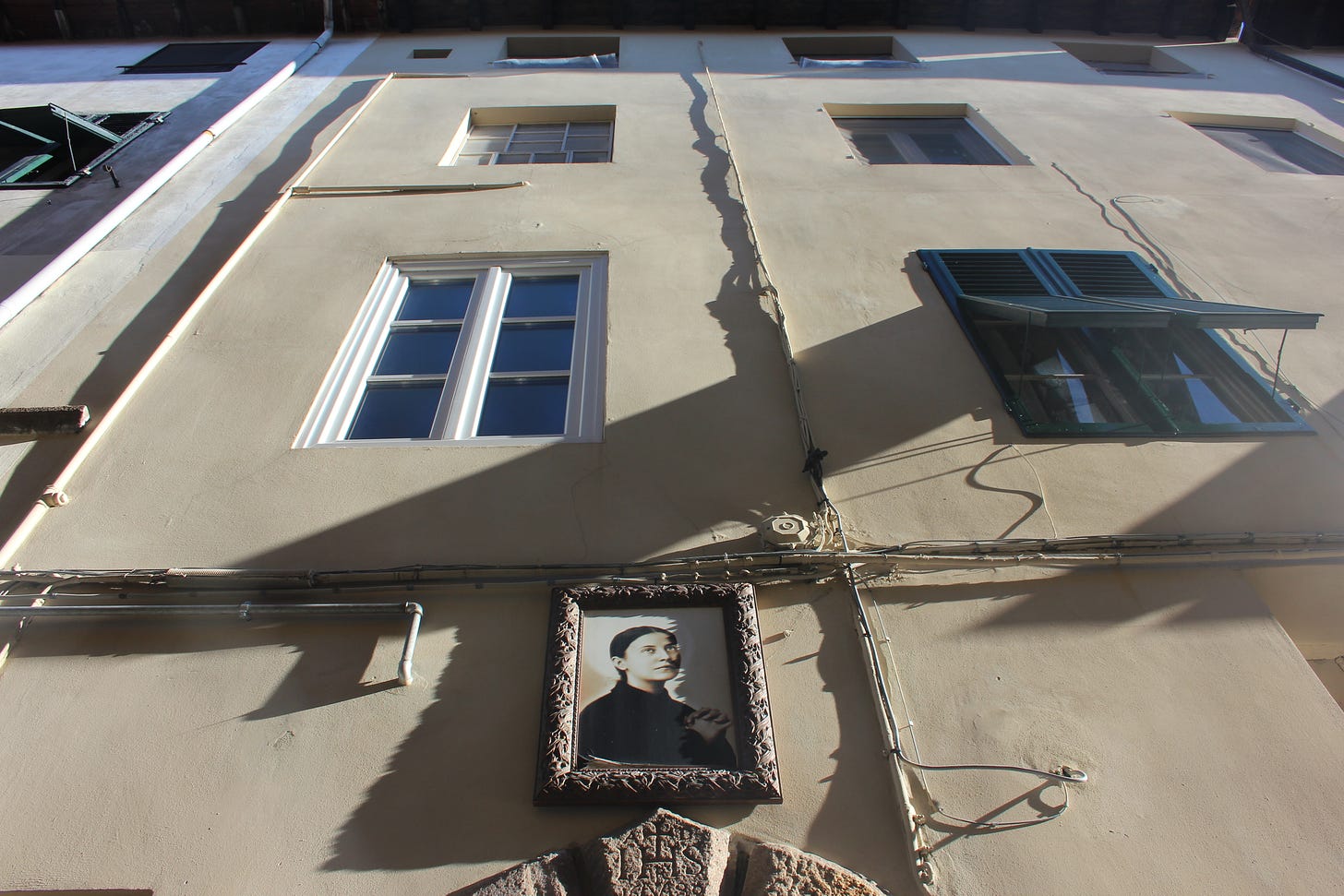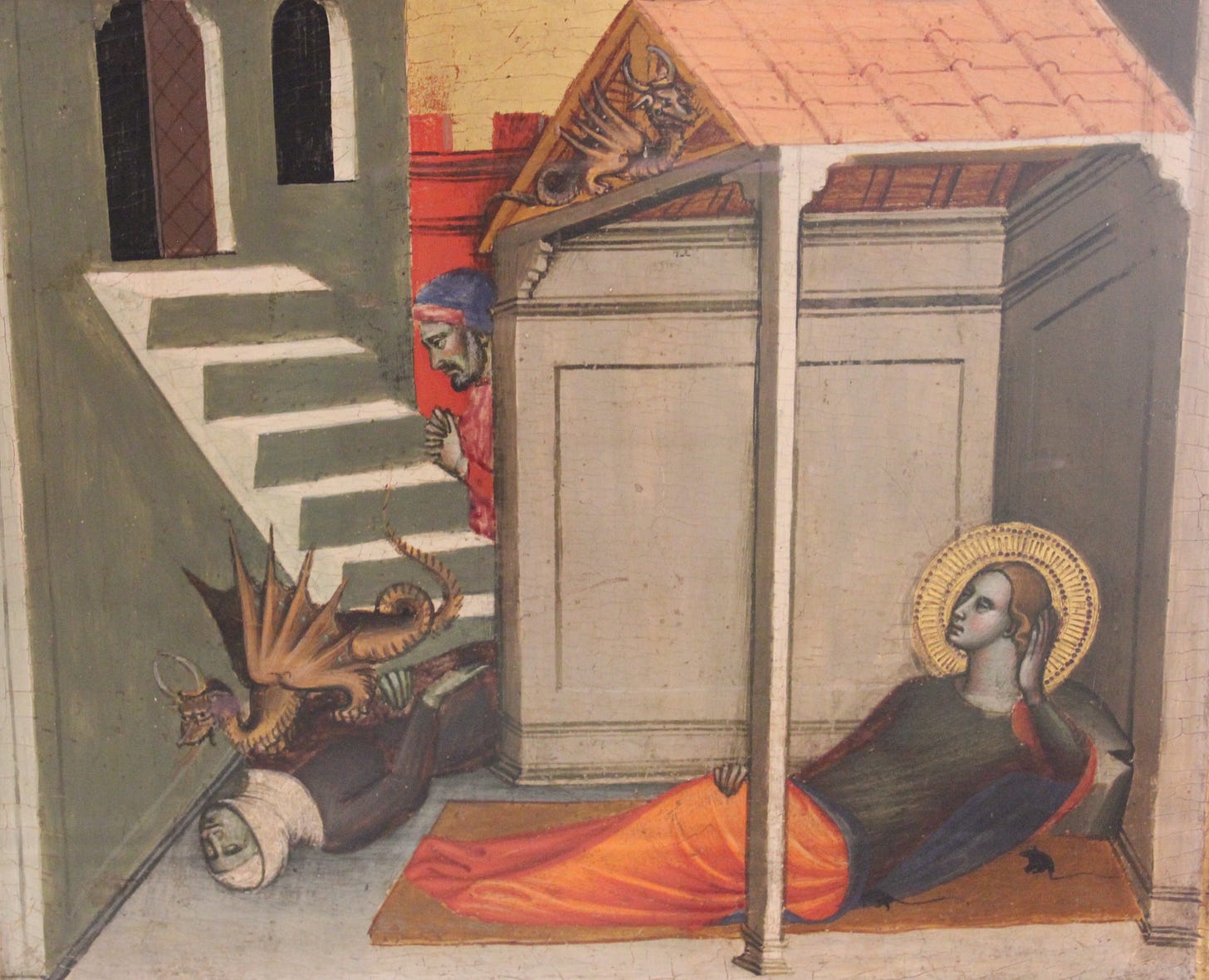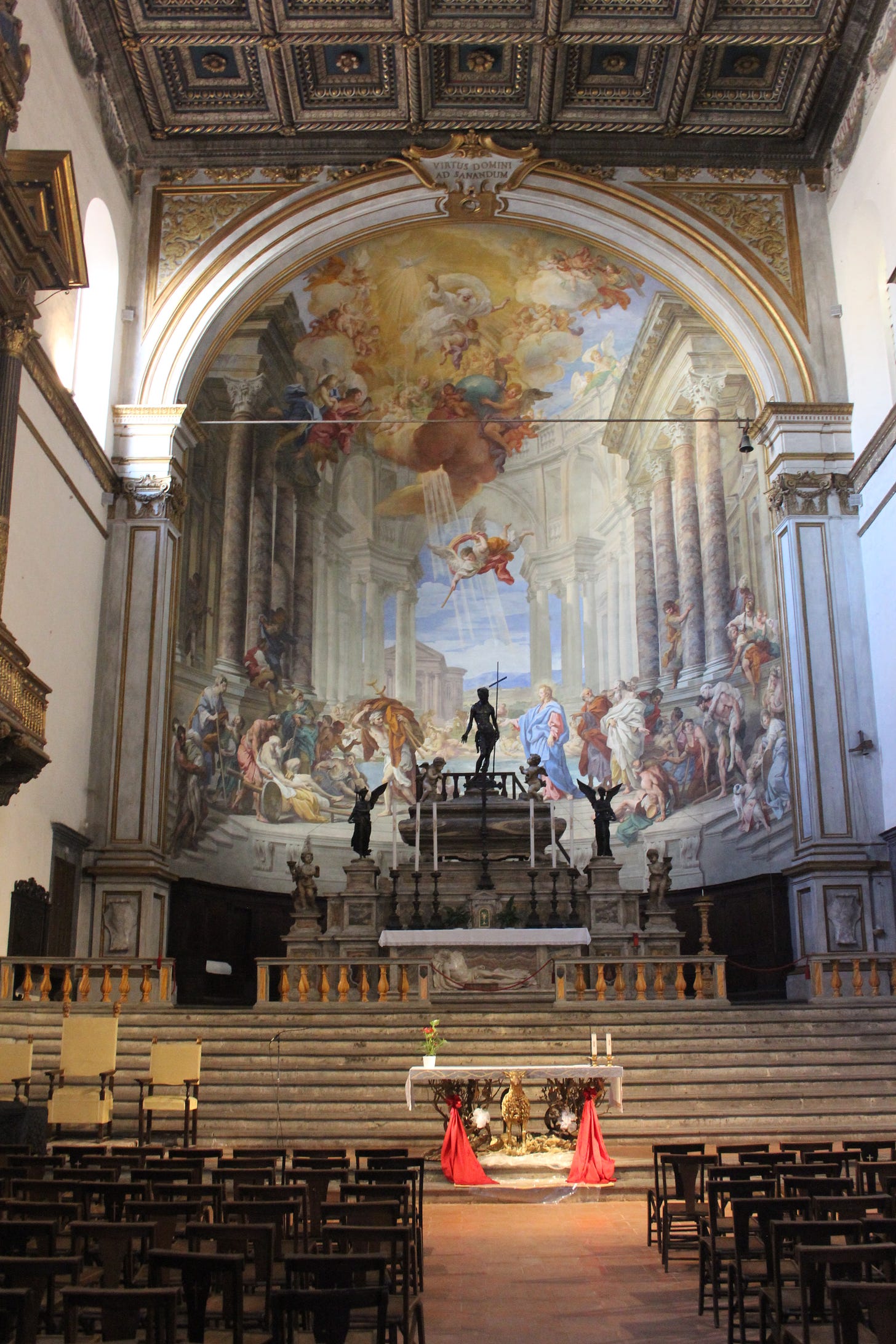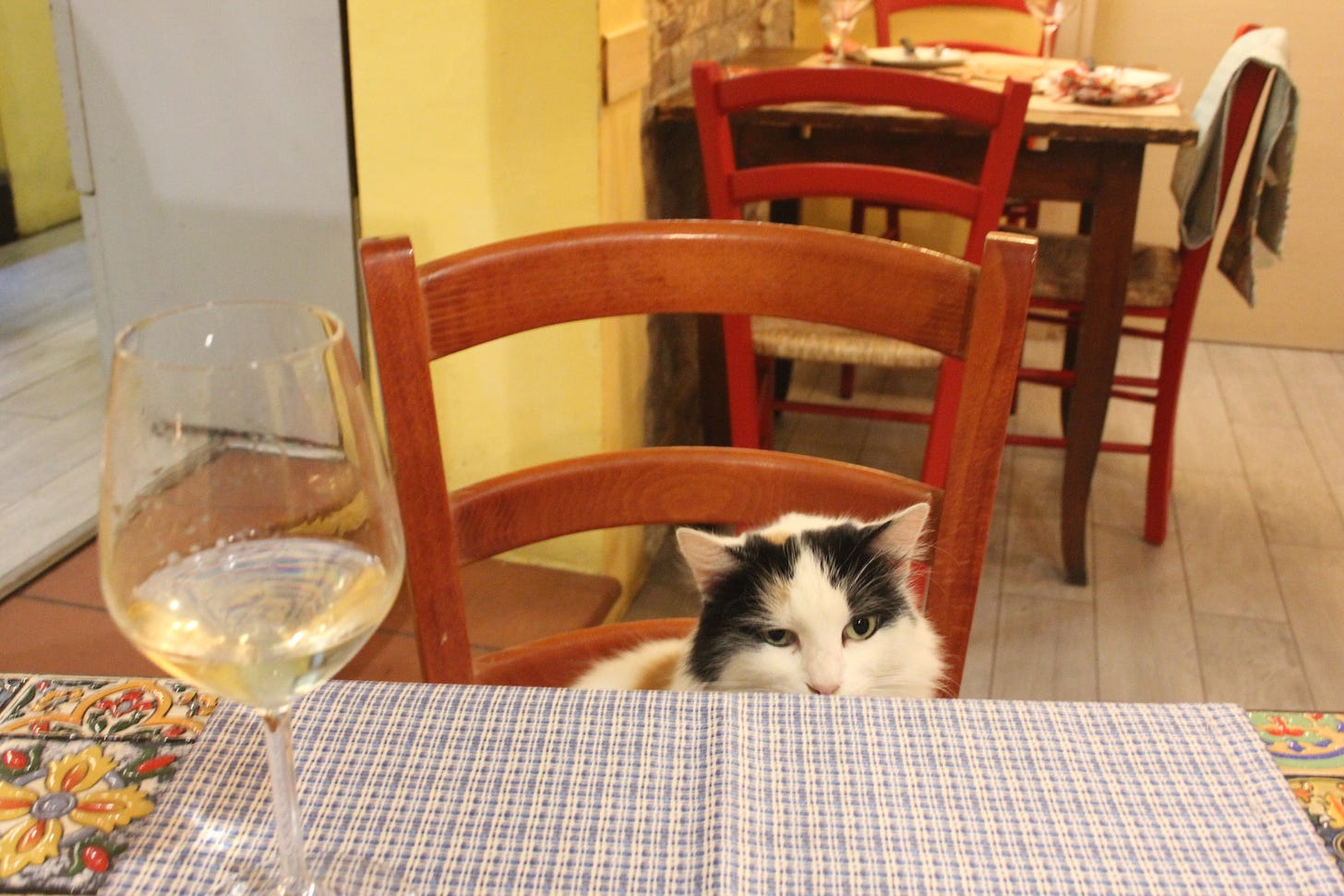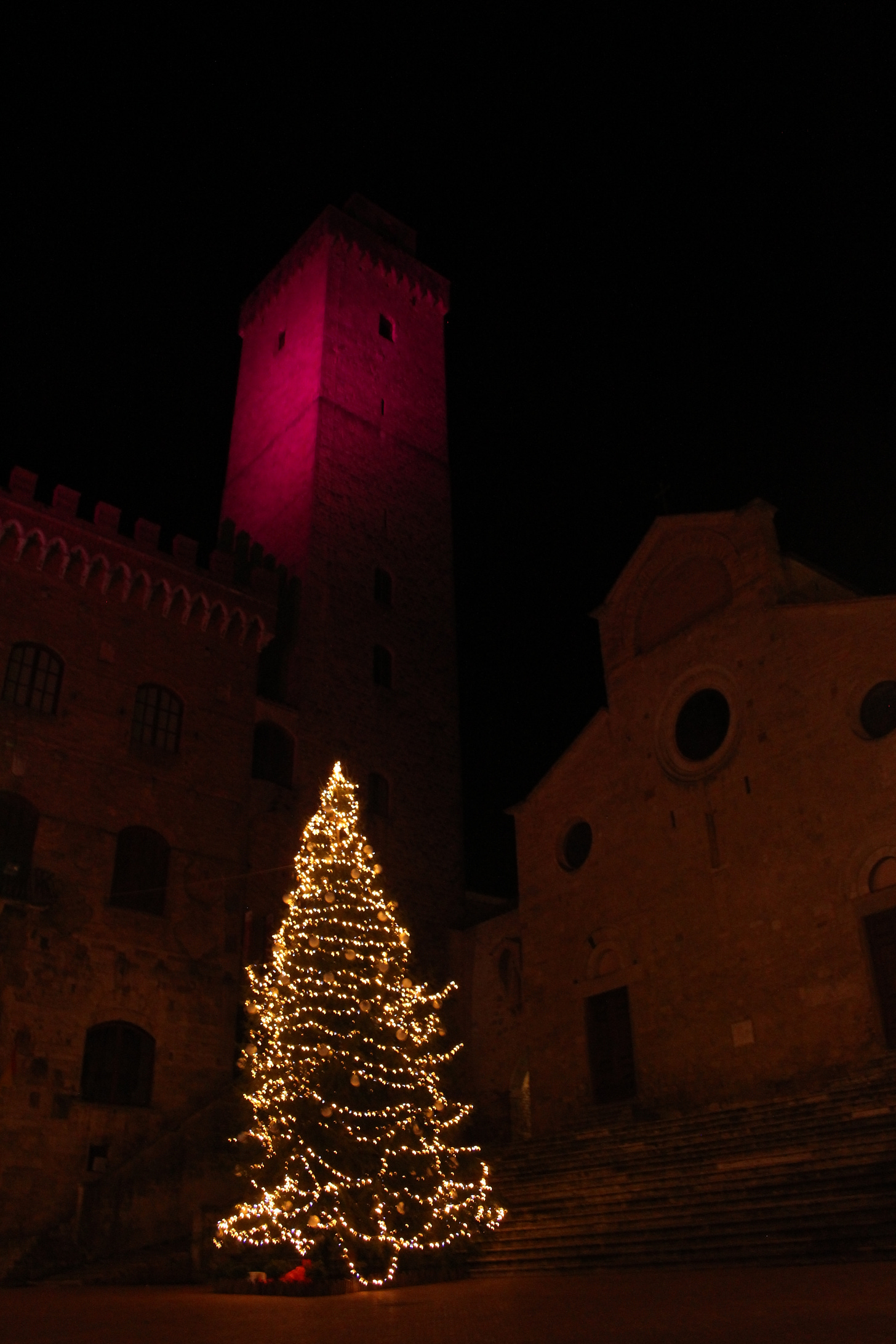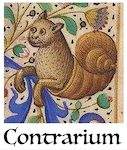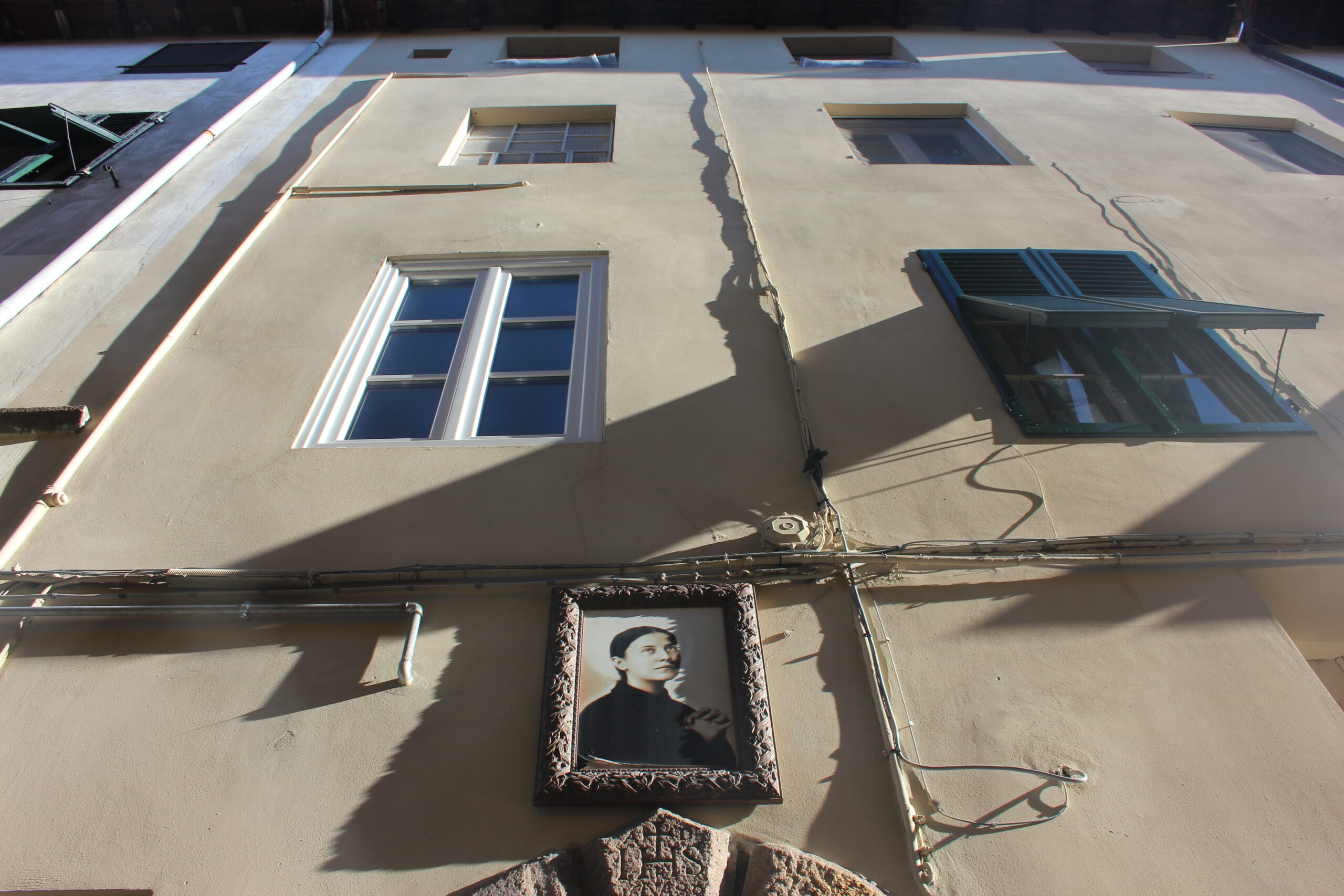From the lives of Tuscan Saints
Gemma
Saint Gemma Galgani was born in 1878 into a poor family in a small village near Lucca, but they soon moved to Lucca as her father, a pharmacist, found work there. She was the fifth of eight siblings, only two females, the rest males. As it happened to other poor people at the time, death was an early companion. Two of her siblings died still in their early childhood. Then her mother died when Gemma was only 7 years old. Her father died when she was 19, and she herself was frail and plagued by many different health problems all her life, and died at just 25 of tuberculosis.
And yet, looking at her photographs, you see a face that seems calm and serene.
Most famous saints were born and died before the invention of photography, but we have wonderful paintings of them by famous artists. With Gemma, it’s the opposite. When Saint Gemma was canonized, in 1940, modern art was already in full swing, so there are no great paintings of her, but there are two or three beautiful photographs — and only because she was ordered to by her confessor, as she didn’t like to be photographed.
I visited the Sanctuary of Saint Gemma in Lucca — which is also, by the way, the hometown of opera composer Giacomo Puccini, but I only found that out because there was a giant statue of him right in front of the place I was staying — and also Casa Giannini, which is the house of the Giannini family that basically adopted her after she became an orphan. A nun gave me a guided tour as she enthusiastically talked about Gemma’s life.
There is another house where Gemma lived, which belonged to her father, the so-called “casa delle stigmata”, which is where she supposedly received the stigmata signs of Christ. I wanted to visit it too, but that required an appointment and unfortunately I didn’t have much time. Not having a car, my mobility was reduced, and I had to get to San Gimignano that same afternoon. It took me almost five hours to reach it by a combination of delayed buses and trains.
Two other things impressed me in Lucca: that a lot of people moved around in bicycles, including some very elegantly dressed women checking their iPhone at the same time (this is not as common in Italy as it is in, say, the Netherlands), and the young students in the street selling, or trying to sell, the “Lotta Communista” newspaper. (I thought Italy’s love affair with the Communist Party was a thing of the past, but apparently not.)
Fina
San Gimignano is a wonderful little medieval town with nothing much going on except well, amazing churches and afrescos and towers, but during summer it is usually full of annoying British, American and German tourists. Thousands of them. (The American ones are particularly obnoxious. I remember once an American middle-aged woman saying about a similar medieval town: “it is beautiful, but everything looks the same”. “Let’s get a gelato”, his husband replied).
Italy would be a wonderful place to visit if it wasn’t for the tourists.
Now, I know, it’s not nice to complain about tourists when I am a stupid tourist myself. But the nice thing about visiting Tuscany in winter is that almost everything is empty and quiet. No lines, no crowds. The town, usually filled to maximum capacity in summer, right now has mostly deserted streets. I bumped with a few locals and a couple of Japanese tourists — there are always Japanese tourists, but they are quiet and polite and don’t bother me — but that was it.
In San Gimignano, the most famous local saint is Santa Fina. Her life, if anything, was even more tragic than that of poor Gemma. Born in 1238 into a noble family that had, however, fallen into rough times, at just ten years of age she developed an illness that left her basically paralyzed. Refusing a bed with a mattress, which she thought too comfortable for a poor sinner like herself, she slept in a wooden pallet. During her five years of illness, her father died from some disease or other, then her mother fell down the stairs and died too. Fina got worse and worse and died at just 15 years of age, but with the same serenity as Gemma. There are no photographs of her, of course, and not even paintings made when she was still alive, but several paintings and afrescos in the local church and museum tell her story. Fina’s house also still exists, but unfortunately it is now a private residency and it not possible to visit it.
For some reason, Saint Fina was never officially canonized, but don’t tell that to the people in San Gimignano. They hold not just one, but two processions in homage to her every year, one in March, and one in August. Unfortunately, none in December.
Catarina
Siena is another wonderful medieval town, certainly bigger than San Gimignano and even Lucca, although not as big as Florence. Dante visited it a few times and mentions it in his Comedy. Catarina di Siena — Saint Catherine — was born there just a few years after Dante’s death.
She didn’t live to old age either, but at least managed to reached a slightly more respectable age of 33 years old — the same as Christ — when she died. While like Gemma and Fina she also lived a personally humble and austere life, contrary to them she was not from a poor family and eventually she also became heavily involved in theology and politics. In fact, she’s famous for having managed to help solve a schism and convince the then Pope to return to Rome from Avignon — were it not for her, perhaps the Papal seat would today be located in France.
There are many paintings of her, at least one of them contemporary, and her real head can be seen in the Basilica of San Domenico in Siena. It is an impressive sight. Her head is supposedly “uncorrupted”, that is, the skull was never mummified by artificial means, but somehow remained with skin around it — for over 600 years.
When I visited it, Siena was also relatively quiet in the morning and early afternoon, but then, at around 4 PM in that lazy Sunday, the streets suddenly became filled with people. Where did all those pedestrians just come from? It seemed as if everyone and their mother had decided to come out of their home at exactly the same time. Perhaps it’s just because “lunch time” in Italy is from 1PM – 4PM and most shops are closed during that period, but it was odd.
I don’t know about my two or three remaining readers, but I am fascinated by the lives of martyrs and saints. They usually have lead such rough, difficult, even tragic lives, full of suffering and pain, and yet they withstand everything with the utmost serenity. “Well, that’s why they are saints”, you’ll say, while we’re just stupid sinners, but having just a diminutive crumb of that serenity and internal peace would certainly help in this day and age.
And by coincidence — but, some say, there are no coincidences — as I had finished writing this text at around 9 PM, I went out to see “what was going on” at night in San Gimignano in winter. As you can imagine, not much. The streets were deserted and all shops were closed. But there seemed to be light inside the main Church. The door was opened and I entered. Inside, there were a few people, mostly older men and women between the ages of 60 and 80, which I suppose is the average age of the local inhabitants. (This is not a joke, as the recent local obituaries posted in the street showed ages between 97 and 102.) Most young people who work in the local bars or shops don’t really live in San Gimignano, but in other nearby towns.
Turns out they were all waiting for the “Novena di Natale”, or Christmas Novena. And, in his homily, the priest spoke about “sanctity”. But he emphasized that he was talking, not about the sanctity that we associate with the most famous Saints, but the everyday “sanctity” that even we can achieve, in little ways, or, at least, in some ways. The Novena ended with the beautiful Christmas song “Tu Scendi delle Stelle” (you can hear it here in a version in a more polished version by Andrea Bocelli).
Merry Christmas to all.
